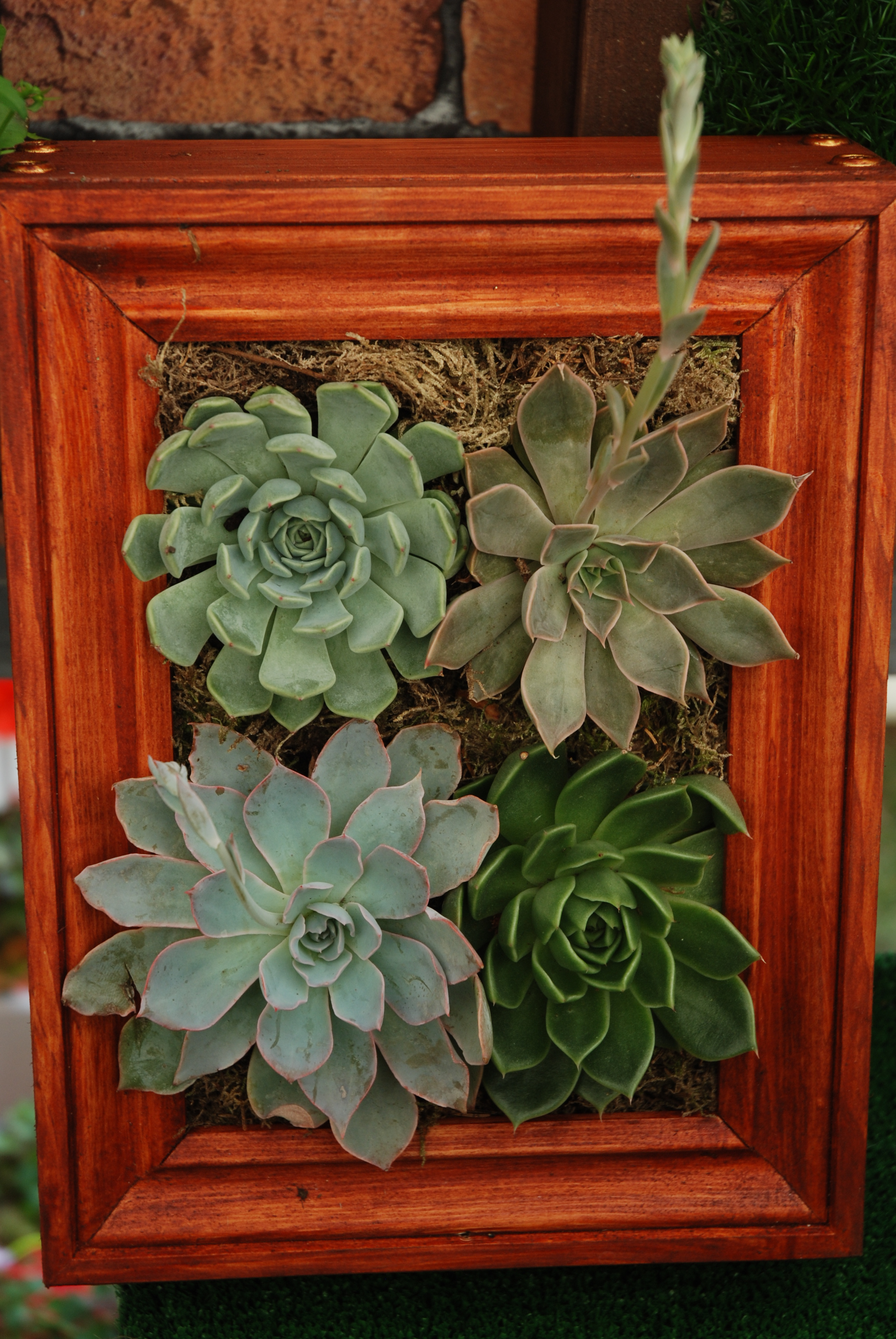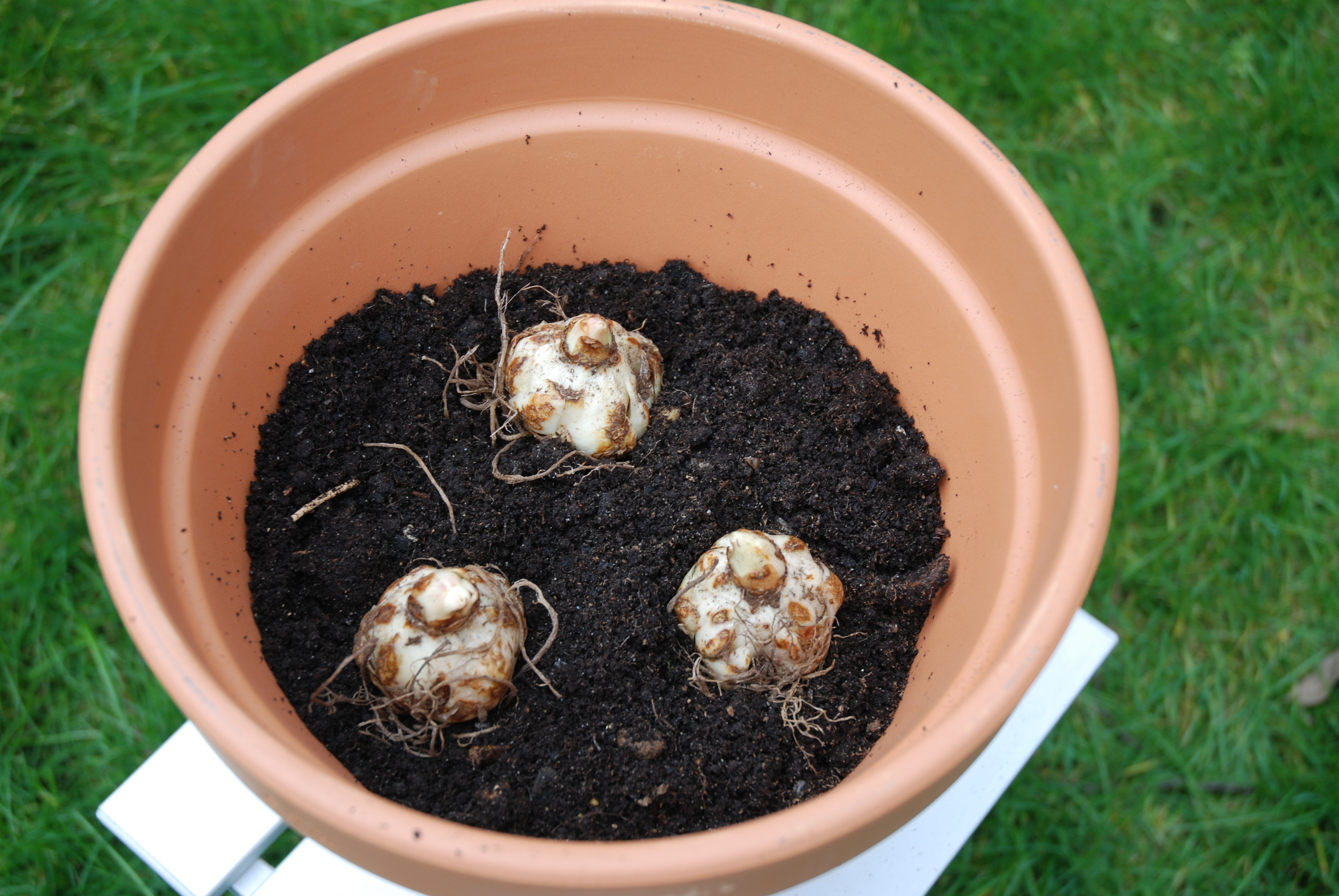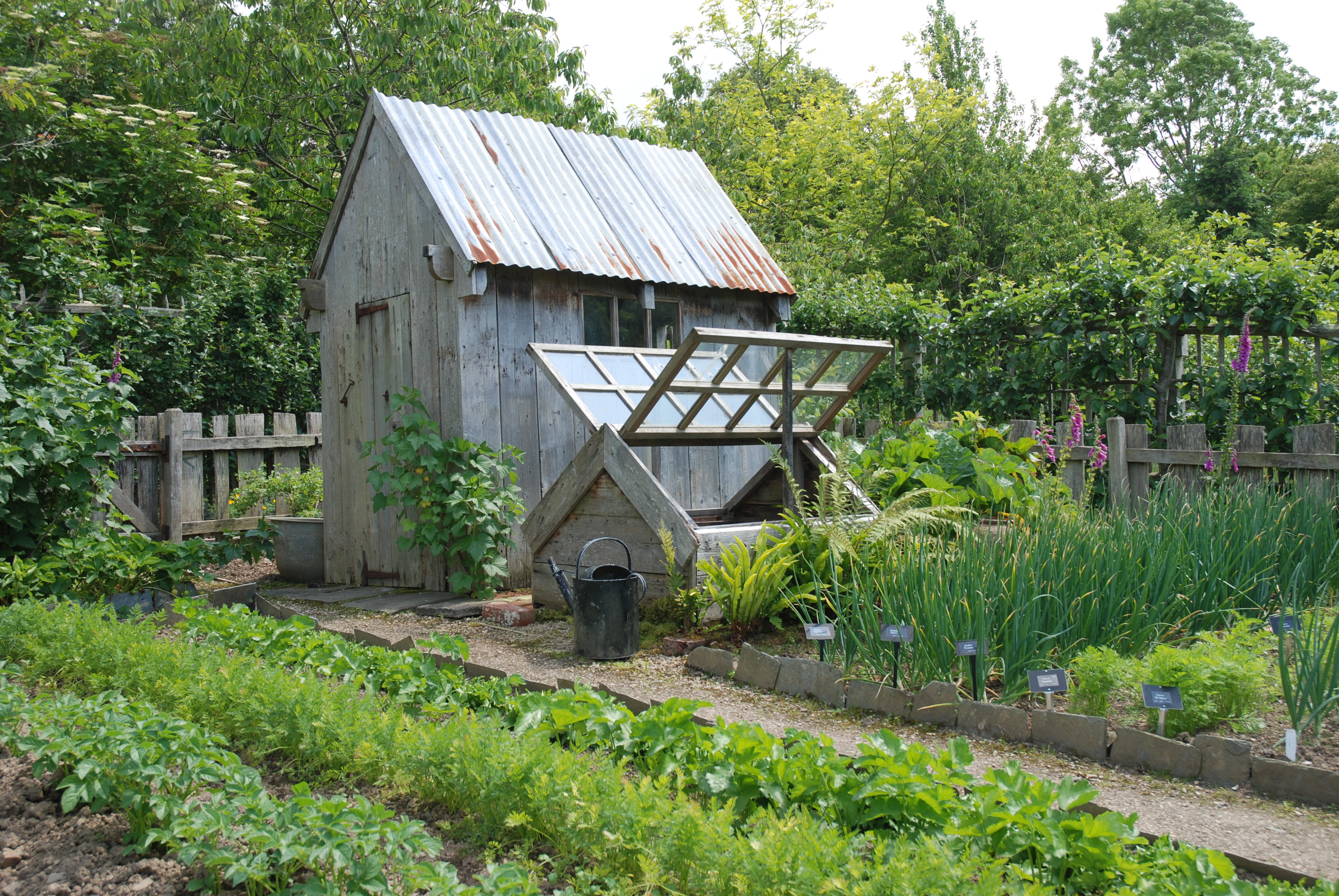Generally
If you have not already done so now is a good time to pot up houseplants. Tired plants can be revived and leaves cleaned. Many housplants can stand being put outside for the summer. Place them in a shady corner and keep them watered but do bring them in before we get a frost. Also check them over throughly for pests and diseases. A friend of mine did not do that and brought in some slugs. They enjoyed eating the fleshy roots of his large money plant! How do you get rid of your slugs and snails? Take part in my poll here.
- Top up the water level in garden ponds when it starts getting low
- Push canes in around tall plants like gladioli and lilies and tie them to the stems for support
- Place eye protectors on the tops of all garden canes
- Water hanging baskets and containers daily, ensuring they never dry out
- Empty compost bins when full, mixing up the compost and then re-filling. Sprinkle the contents with a biological activator as you go
- Apply weedkillers to paths and drives
- Give houseplants a weekly liquid feed
The Flower Garden
- Collect and sow seed from foxgloves
- Take cuttings from pinks (Dianthus)
- Prune philadelphus after flowering, removing stems carrying old flowers. Cut out very weak stems and some of the oldest wood
- Feed dahlias with a liquid fertiliser and ensure plants are well watered. Tie to supports as stems develop
- Remove rose suckers – excavate the soil so you can cut them back as far as possible
- Spray roses regularly to prevent pests and diseases getting hold
- Prune the long sideshoots on wisteria, cutting them all back to a length of about 20cm
- Spray gladioli regularly with an insecticide, such as permethrin, to control thrips that can damage leaves and flower spikes
- Lift, divide and replant healthy portions of flag iris rhizomes into freshly prepared soil. Reduce their leaves by half to prevent wind rock
- Water sweet peas and give a liquid feed. Pick flowers or deadhead regularly
The Fruit and Vegetable Garden
- Water beansand pick them regularly
- Transplant brassica seedlings from the seedbed to their final positions, spacing them about 30-45cm apart. Brussels sprouts need about 75cm
- Plant out leek seedlings from their seedbed once they are pencil thick, planting them 15cm apart in rows, with about 30cm between rows
- Place collars of card or carpet underlay around the stem base of newly transplanted brassicas to keep cabbage root fly away
- Pick off malformed or withered apples and any showing signs of pest or disease attack
- Keep fruit bushes covered with netting, then weave a cane through the bottom edge and peg it down to stop birds crawling underneath
- Make the final pickings of rhubarb and cut any flower spikes that form right down to their base
- Lift early potatoes and shallots as they mature
- Sow swedes and cover with fleece to prevent seedlings being attacked by flea beetle
- Sow seeds of vegetables, including beetroot, cabbage, endive, kohl rabi, lettuce, radish, rocket, spinach and turnips
In the Greenhouse
- Take cuttings of zonal and regal pelargoniums, and pot up rooted cuttings taken earlier
- Train the main stem of cucumber plants up a wire to the roof of your greenhouse. Pinch out sideshoots two leaves after a flower or fruit
- Water plants in pots and grow bags with tepid water, if possible. Try leaving a few full cans of water in the greenhouse to warm up
- Send off for biological pest controls for whitefly and red spider mite
- Propagate lilies from bulb scales, digging bulbs from the garden to remove a few healthy scales, then replanting again. Small bulblets will form at the base of each scale within a few weeks
See you next week, same time same place
Andrew



























